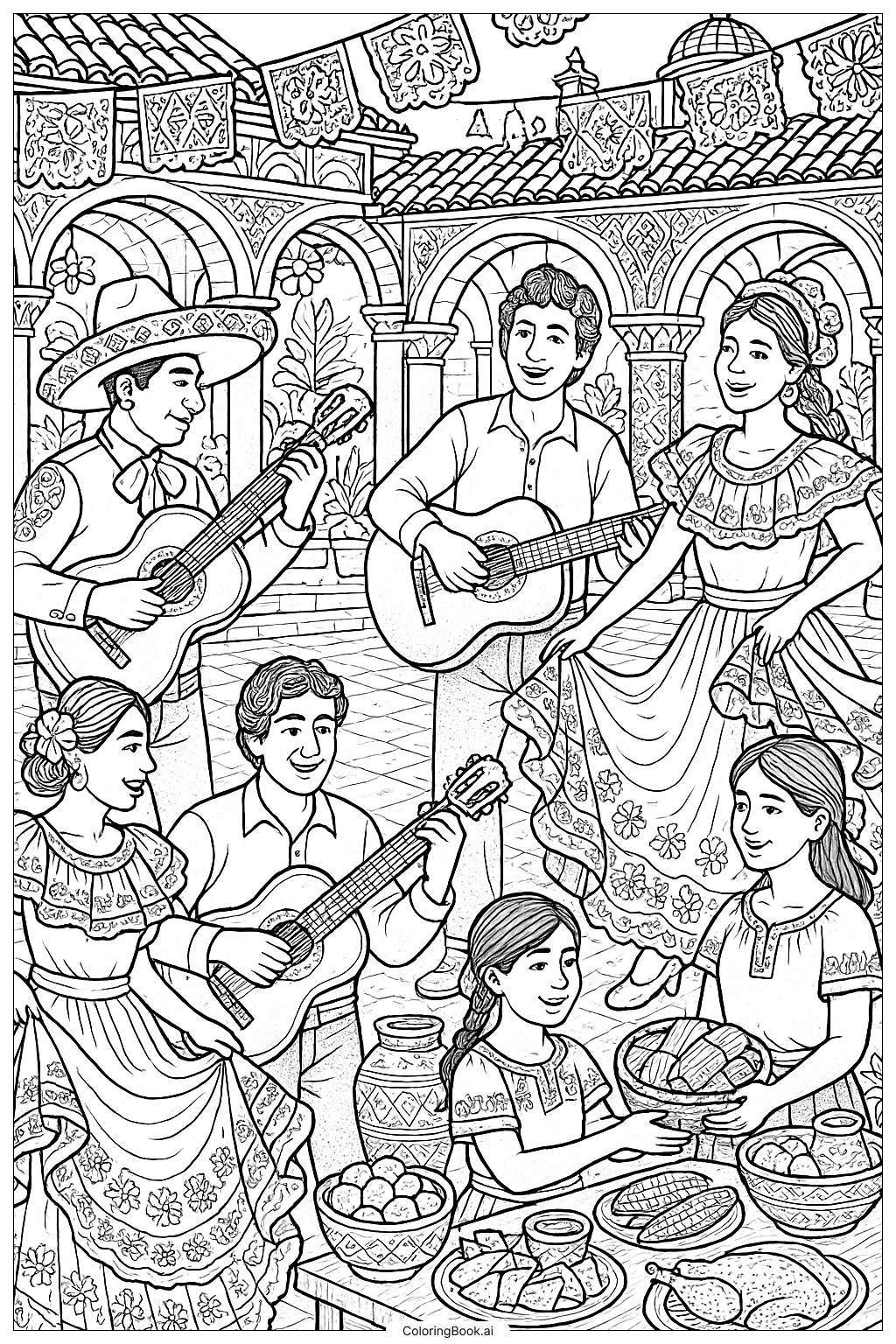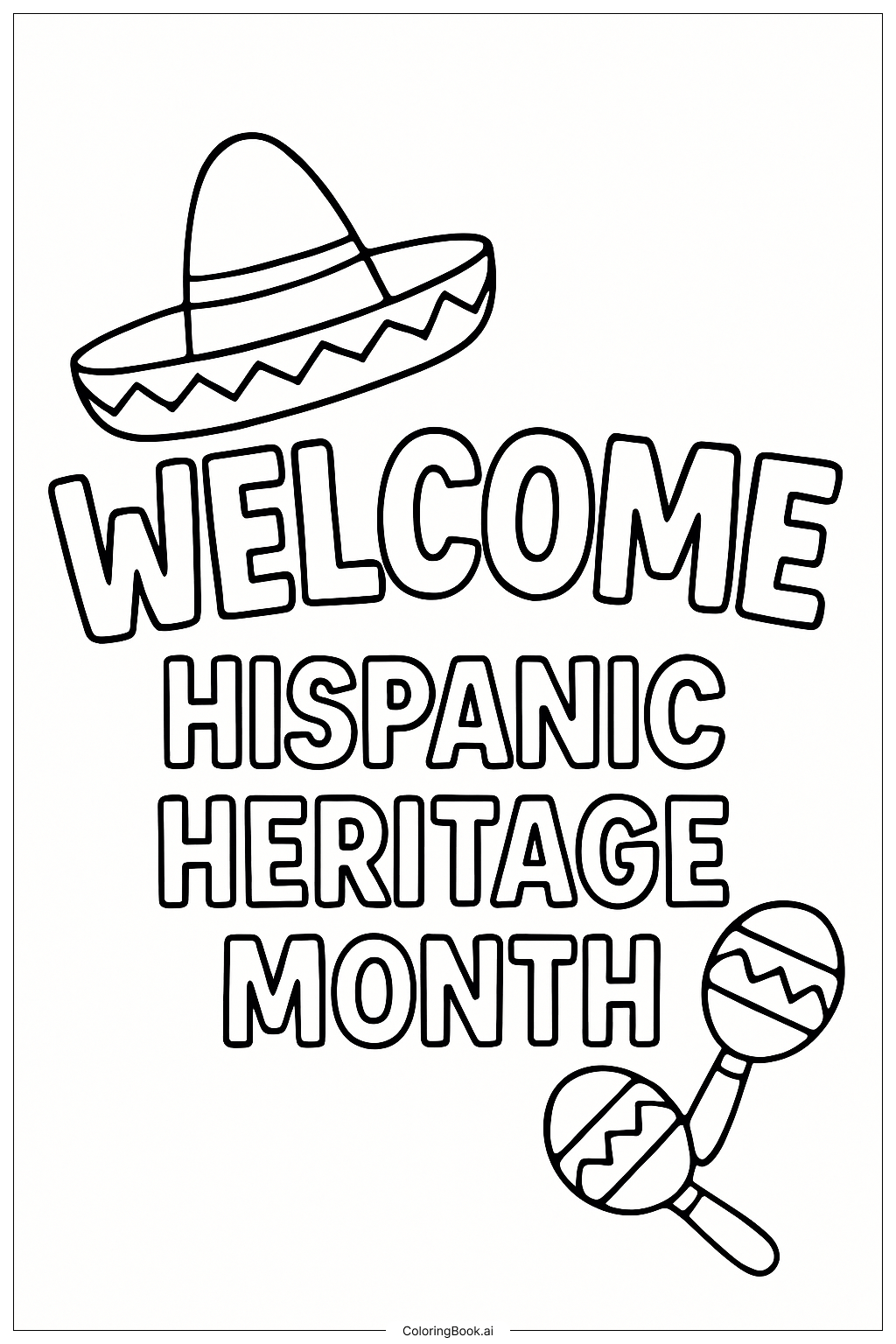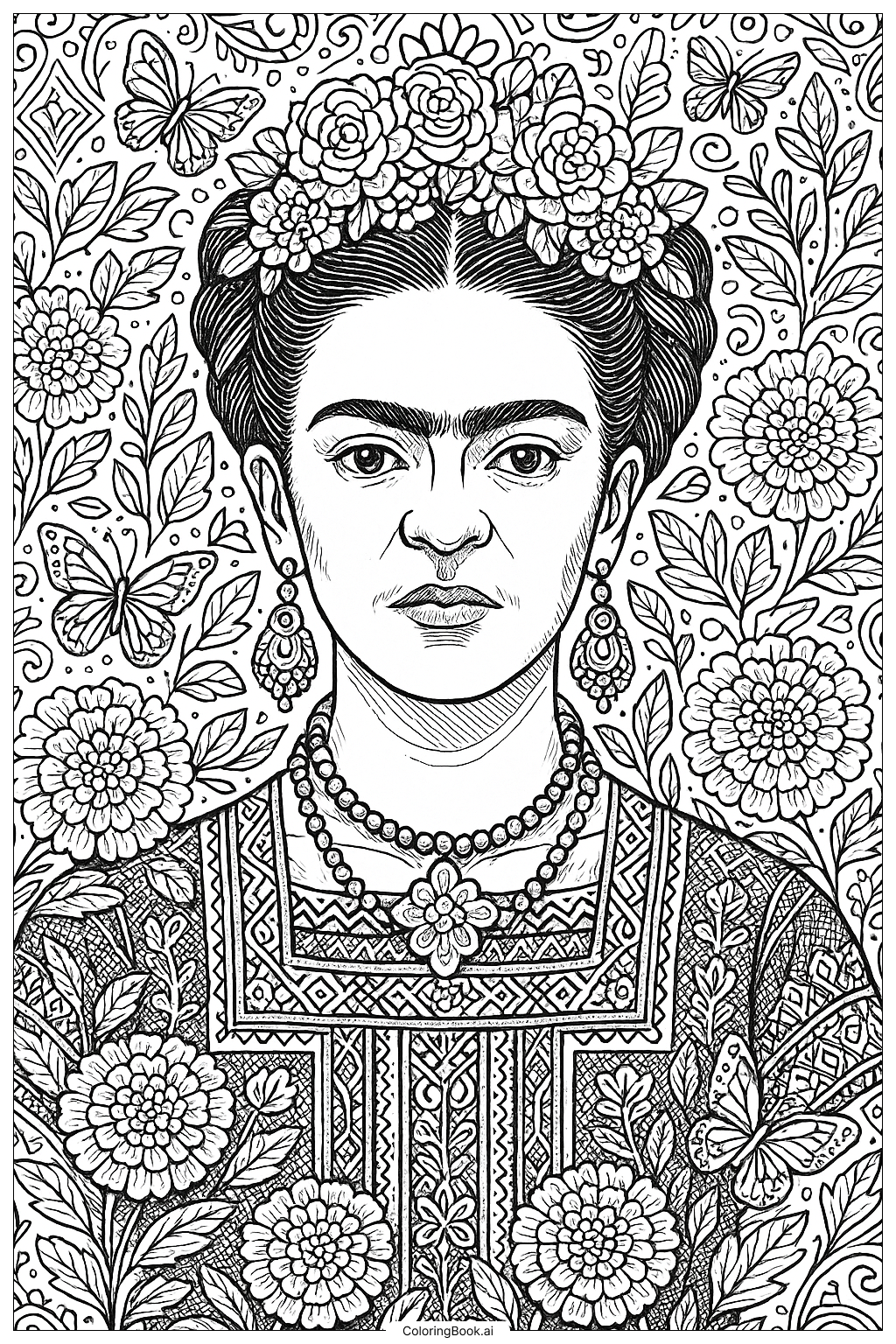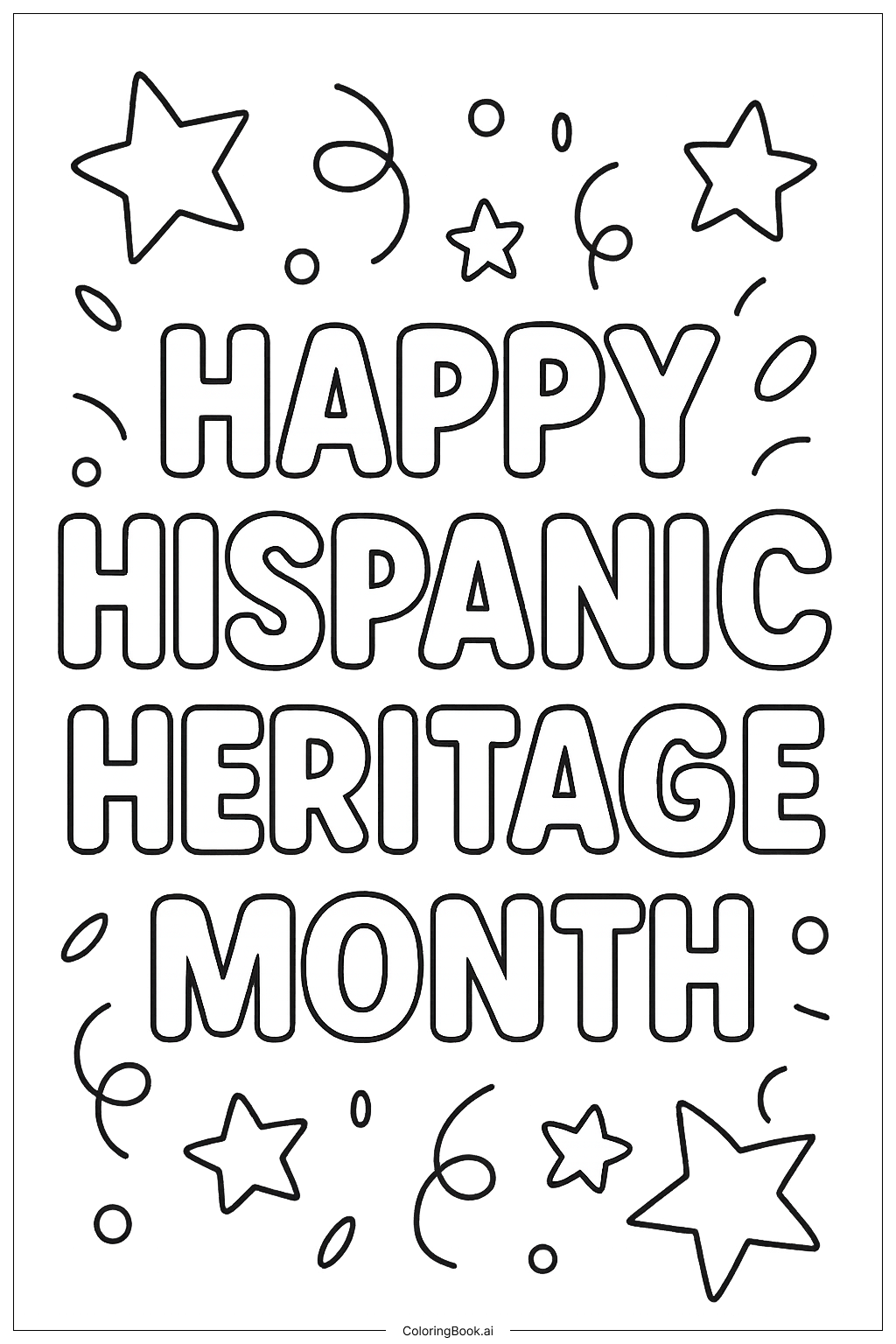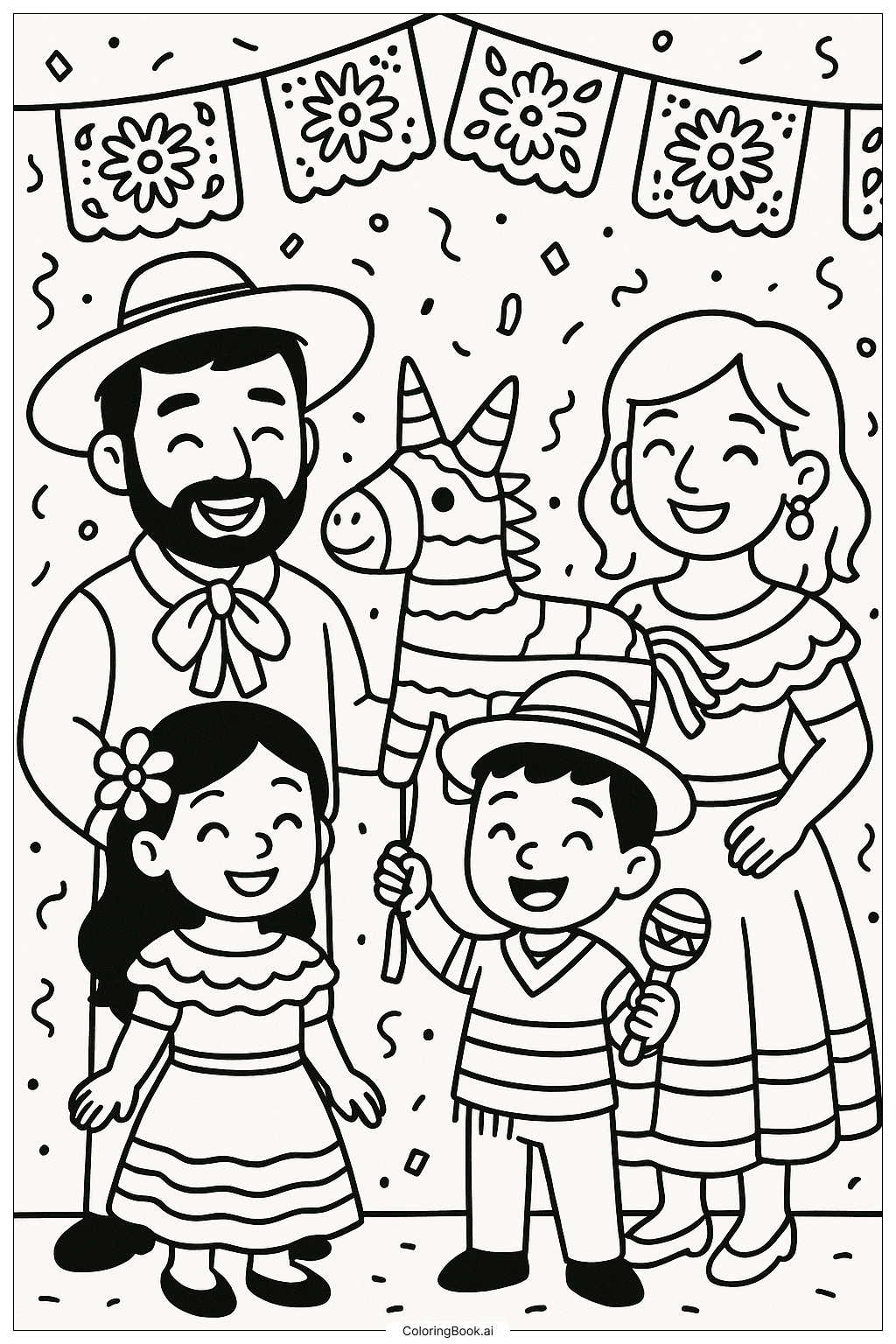Coloring tips: How to color Historical Scene For Hispanic Heritage Month coloring page well?
Use bright, vibrant colors for the traditional clothing to show the festive mood. Dresses can be colored with red, yellow, blue, and green. The guitars can be brown or tan with darker shades to add depth. For the background, soft neutral colors can be used for the walls and tiles to keep focus on the people. Color the papel picado banners in different bright colors like pink, orange, purple, and blue. The food on the table can have warm, natural colors like yellow for corn and brown for bread. Use different skin tones to represent diversity.
Coloring challenges: Which parts are difficult to color and need attention for Historical Scene For Hispanic Heritage Month coloring page?
1. Detailed Patterns: The intricate designs on the dresses and papel picado banners require careful coloring to stay inside the lines and highlight the designs.
2. Faces and Expressions: Coloring faces evenly while keeping friendly, happy expressions can be challenging for younger children.
3. Many Small Objects: The food items and musical instruments have small parts that need patience and focus.
4. Background Elements: The tiled roofs, arches, and walls have many lines and details that can be easy to mix up or get overwhelmed by.
5. Color Balance: Choosing colors that work well together without making the picture too bright or dull requires planning.
Benefits of coloring books: Advantages of drawing Historical Scene For Hispanic Heritage Month coloring page
Coloring this picture helps improve focus and attention to detail because of the many small parts and designs. It encourages creativity by choosing colors for traditional clothing and decorations. It also teaches children about Hispanic culture and heritage in a fun way. Working on faces and expressions helps develop fine motor skills and hand-eye coordination. Finally, completing such a complex image gives a great sense of accomplishment and confidence.
